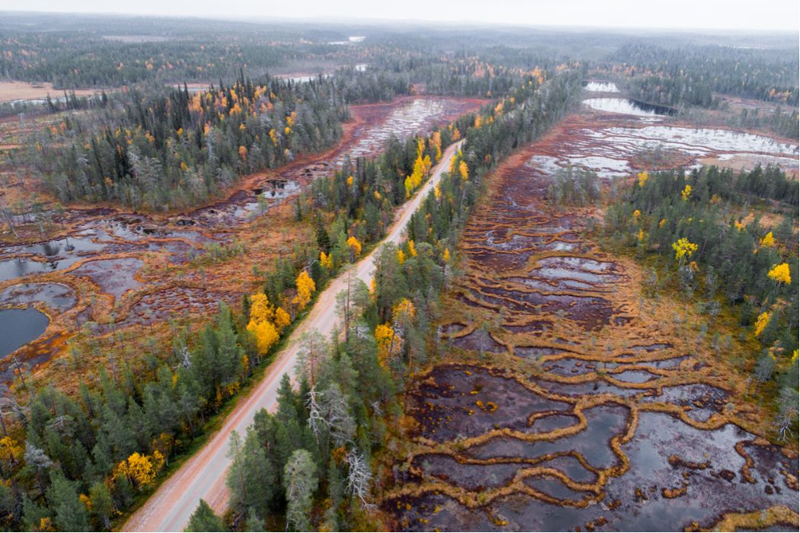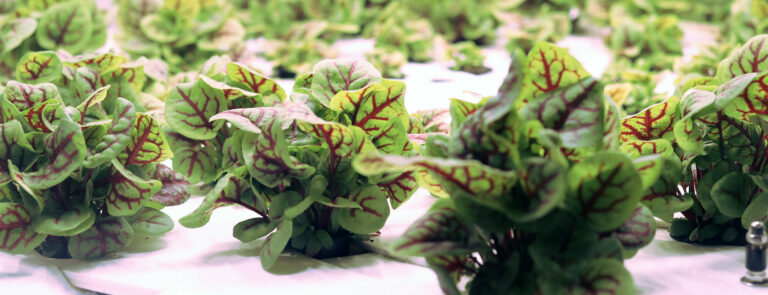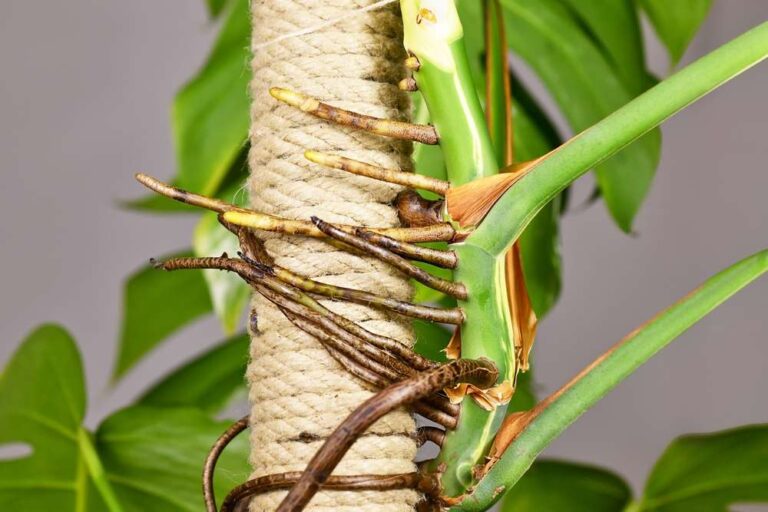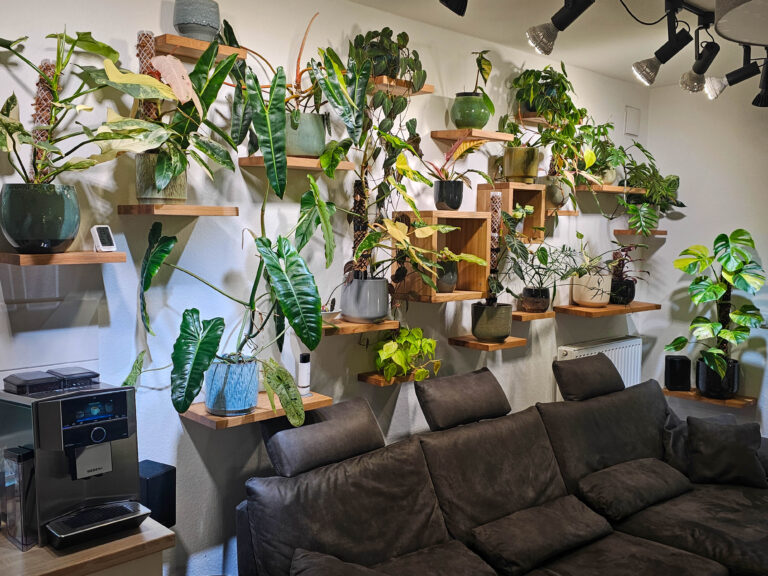Peat Soil: An Ethical Dilemma

Peat is the ideal all-purpose soil used in plant cultivation–but as a natural resource, it is not infinitely available, and its extraction harms our climate. It may be time to rethink!
Peat is the surface layer of soil made up of decomposed organic matter, mostly from plant material, that has accumulated due to waterlogging, oxygen deficiency, high acidity, and nutrient deficiency. Peatlands are a type of wetland like moors, bogs, or swamps.
When it comes to peat, we know two things. First, it’s an excellent additive in substrates. Second, peatlands are great for the environment, so mining them is extremely detrimental to our planet’s health. So how can we provide our plants with the best possible soil and protect our peatlands by keeping peat soil where it is most beneficial? It’s the age-old dilemma.
There is valuable research on peat alternatives with the goal of being as beneficial as natural peat. Peat is a great starting substrate because it can store a lot of water and release it slowly, making it the perfect all-around plant soil. Thanks to a good pore size distribution, it can simultaneously hold water and air so well that the roots do not suffer oxygen deficiency. The low nutrient content and pH allow for easy adaptation of nutrients and lime individually to each plant species. In addition, peat is very light when dry, which is quite convenient for transportation.
Peatlands Make Better Forests
Peat is formed in bogs where groundwater is always close to the surface. Because there is so much water in the soil year-round, there isn’t enough oxygen to decompose the plant matter that accumulates. Peat refers to plant parts that do not decompose or decompose only partially. Over time, an increasingly thick layer accumulates. A ten-meter-thick peat body takes about 10,000 years to form in a peat bog, making it a non-renewable resource.
The plant parts bind CO2, and not too little. Although peatlands cover only 3% of the earth’s surface, they store 20% of global organic carbon! Compared to forests, they are five times as efficient and even exceed the carbon storage capacity of oceans.
They are also pretty good at flood control. Peat soil is highly absorbent, and the mosses act like sponges. As a result, these habitats can quickly store large amounts of water and release it bit by bit. They collect nutrients and pollutants and release freshly filtered water back into bodies of water. In doing so, they also ensure better groundwater and drinking water quality. Nature’s water filters!

From CO2 Reservoir to Greenhouse Gas Guzzler
Peat from raised bogs is used for plant cultivation because its properties make it ideal for plant needs.
The former large-scale raised bogs of Northwest Central Europe were destroyed or partially drained, first for peat extraction for fuel, then for horticulture and conversion into arable land. More than 60% of all peatlands that once existed on the European continent are now considered disturbed. In EU countries, as many as at least 80% of peatlands are no longer intact. As a result, nearly all the plant and animal species native to these areas are on the brink of extinction or are highly endangered.
During drainage, plant parts come into contact with air and decompose, releasing large amounts of carbon dioxide. Despite accounting for only 7% of agricultural land, cultivation of drained peatland soils accounts for 37% of total greenhouse gas emissions in German agriculture.

How Dire is the Peatland Situation?
Fortunately, regeneration stages of raised bog vegetation can be found in nature reserves. This development is especially crucial because intact peatlands mitigate global warming through their wonderfully efficient CO2 storage. So, the more intact peatland we have, the better it is for our climate.
Through rewetting, or quenching, peatlands can store more CO2 once again. An economic follow-up use can be implemented in paludiculture. In practice, this means sedges, reeds, cattails, sphagnum moss, or alders can be cultivated while preserving or building up the peat body.
Awareness for Petland Conservation is Growing
Since 2015, horticultural peat use has declined in Germany, while the use of peat substitutes is growing steadily. Peatland extraction is strictly regulated, and those that are still close to their natural state are now protected and may no longer be used commercially. Slightly damaged peatlands are being remoistened so they can once again act as a nutrient and CO2 sink. Peat extraction for horticulture may eventually be prohibited beginning in 2025. The current coalition agreement states as a goal that climate-friendly alternatives to peat reduction should be made available to reduce the use of peat as much as possible and, where substitution is possible, to eliminate it entirely.
In contrast to Germany, peat extraction in other EU countries is predominantly carried out in near-natural peatlands, significantly impacting biodiversity and the climate. Because the conditions are less strict, peat extraction has largely shifted to the Baltic states. To avoid simply increasing imports of peat, it is important to set and implement uniform targets at the EU level as well.
Consumers Have the Power
Even with a growing awareness of peat conservation in Germany, there is still a fundamental problem: the willingness to pay a fair price for potting soil is not universal. Today, a large proportion of the peat used in Germany no longer comes from Germany but from the Baltic and Russian upland moors. Production occurs at lower labor costs and with fewer environmental regulations, to the detriment of the climate, the workers, and nature.
Armin Blievernicht, a research associate at Berlin’s Humboldt University, is investigating how peat can be replaced in the future. Some substances are well-suited to supplementing or even completely replacing peat, but their composition is still too variable to establish substrates in professional cultivation. Another challenge, he said, is that potential alternatives are not yet available in sufficient quantity because demand is too low.
“The low demand equally causes the low supply,”
Blievernicht says.
An End to Peat Harvesting is in Sight
The good news is that even reducing the use of peat in the soil can significantly reduce emissions. In the meantime, numerous substances have established themselves in the hobby sector. Clay granules and perlite increase water storage capacity and have the advantage over peat that they are structurally stable and do not lose their great properties after a dry period.
Another option is peat mosses (Sphagnum), which have properties similar to peat. The moss grows on top of the peat, and its decomposition has been linked to considerable damage to the bog. However, researchers are in the process of developing cultivation methods for substrate production. So-called ‘sphagnum farming’ has the potential to replace peat in the future. But it may be a while for proven results with all plants. „Research is a process of continuous improvement. Conventional peat substrates have also been researched for a long time to reach the current quality,“ Blievernicht adds.
“Research is a process of continuous improvement. Conventional peat substrates have also been researched for a long time to reach the current quality,”
Blievernicht adds.

Buying is voting: Farmers are not the only ones who have contributed to the destruction of peatlands and often they could not survive otherwise due to economic constraints. It is also up to us as consumers of these substrates to protect the peatlands by deciding what we support with our purchasing power. There are already great alternatives in the hobby sector. Even kitchen herbs can now be bought in peat-free soil.







